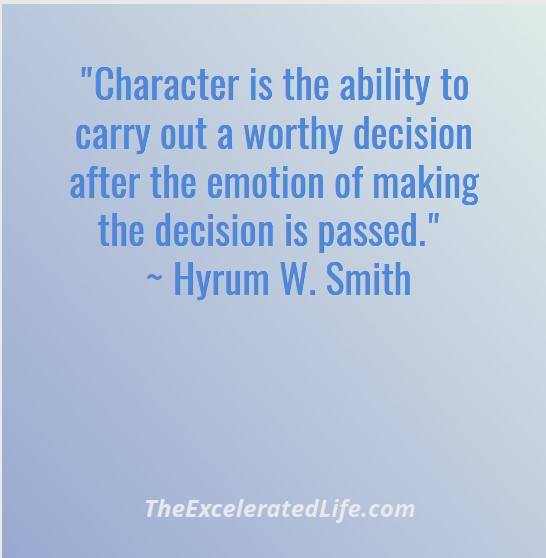“Inner peace is having serenity, balance and harmony in our lives achieved through the disciplined closing of gaps.”
Hyrum W. Smith The 3 Gaps: Are you making a difference?

Hyrum Smith is the creator of the Franklin Planner and other time management tools and training courses. The founder of the Franklin company, he later partnered with Dr. Stephen Covey and the two created Franklin Covey, a leader in the time management industry. However, Hyrum Smith defines the issue, not of “managing time”, but as managing your life. Event control is the tip of the iceberg. There is foundational work that we must do before we can effectively decide upon, prioritize, and schedule the events and tasks that we desire to accomplish or that we are called upon to do because of jobs or other obligations.
Smith has identified 3 “gaps” that we must close in order to live effective and purposeful lives, in order to – in his words – “make a difference” with our lives. The 3 gaps, according to Smith, are:
the Beliefs Gap – acting on “incorrect” vs. “correct” beliefs;
the Values Gap – “The state of harmony between what you value and what you do . . .”; [Smith]
the Productivity Gap – the “time management” piece; where you want to spend time vs. where you are spending your time.
Today, let’s examine the Beliefs Gap and how to act on “correct” beliefs instead of “incorrect” beliefs.
We all view the world through a set of beliefs and this constitutes the bulk of our reality. Smith calls this our “belief window”. On our belief window we have beliefs about natural laws, personal values, and opinions. These beliefs are not “right” or “wrong”, “good” or “bad”, but they can be either correct or incorrect. And here is an important rule to keep in mind: Because you believe the things on your “belief window” to be true, you act as if they are true.
How do you tell if a belief is correct or incorrect? In the case of natural law, it’s fairly simple. As Cecile B. DeMille reportedly said, “It is impossible for us to break the law. We can only break ourselves against the law.” Consider the law of gravity. Whether or not you believe it is true, if you trip, you’re going to fall. If you step off the top of a building, you’re going to splat. If you believe gravity doesn’t apply to you, that is a demonstrably incorrect belief. The same holds true for other natural laws – whether you know about them or not.
How can you tell if a value or an opinion is correct or incorrect? Pay attention to the results you get.
Consider Smith’s Reality Model. In the Reality Model, you have Needs. According to Smith, all of us have 4 basic needs: to live, to love and be loved, to have variety, and to feel important.
In the Reality Model, Needs drive Beliefs. We establish Rules based on the Beliefs. Rules determine our Behavior and Actions. Behavior / Actions bring Results. Needs > Beliefs > Rules > Behavior / Actions > Results. (Consider the similarities to the TBEAR model we’ve already been using: Thoughts > Beliefs > Emotions / Expectations > Actions > Results.)
Is a belief correct or incorrect? To determine that, ask yourself this question: Do the results of this belief meet my needs over time? If the answer is “yes”, then this is a correct belief. If the answer is “no”, then obviously it is an incorrect belief. “Any belief that drives behavior that does NOT meet your basic needs OVER TIME is an incorrect belief.” [Smith]
To close the Belief Gap, consider your results. If the results you are getting (in any specific area) do not meet your needs over time, then change your beliefs.
- Recognize that there is a belief that needs to change.
- Substitute a new belief. (Change your thoughts.)
- Set up new rules based on the changed belief.
- Monitor your results.
If you follow this model over time, your behaviors and your results will increasingly meet your needs. In Smith’s words, your beliefs are more “correct”. And correct beliefs drive behaviors and actions that lead to the results you want. You begin closing the Belief Gap, such that your Beliefs, the Rules you set for yourself based on your beliefs, the Behaviors and Actions the Rules drive, lead to Results that more effectively meet your Needs. And that is Excelerating™!
Excelerated Selffulness™ — taking excellent care of yourself — is one step in creating your Excelerated Life™, a life of well-being, meaning, and purpose.
Resources:
Smith, Hyrum W. and Richard L. Godfrey. The 3 Gaps – Are You Making A Difference? Oakland, CA: Berrett-Koehler Publishers, Inc., 2015

